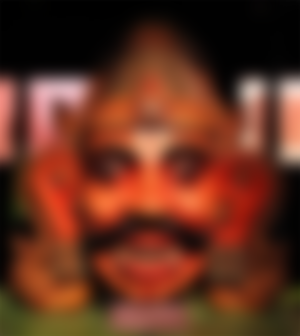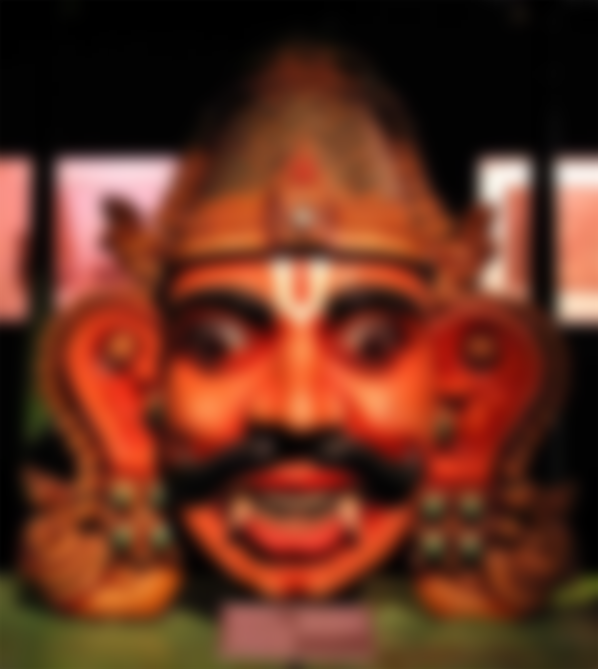Kuvagam is a quiet and secluded village in Ulundupettai taluk of Villapuram district in Tamil Nadu. In the village of Kuvagam, about 190 km from Chennai, thousands of people flock to Kuvagam every year in the month of Chittirai in the Tamil calendar, in mid-April. The Kubhagam festival is celebrated for eighteen days for the purpose of the village deity Kuthandavar or Arvan. The festival is mainly attended by people of the third gender or hijra community. This Kuvagam festival is the biggest festival for third sex people in India and South Asian countries.
The festival is held in honor of a great ballad of self-sacrifice in the battle of Kurukshetra in the Mahabharata of the god Aravan or Iravan. Although the incident is not mentioned in the original Sanskrit Mahabharata, a detailed explanation of the incident is found in the Tamil version of the Mahabharata, written by the ninth-century Tamil writer Peruntevana. Besides, the story of Aravan's heroism and selfless sacrifice is common in the mouths of the people of the Deccan.

This Iravan or Aravan was the son of Arjuna, one of the best characters in the Mahabharata. Arjuna had to leave Indraprastha, the capital of the Pandavas, on a pilgrimage after observing celibacy for twelve years, as his elder brothers Yudhisthira and Draupadi entered the room without any remorse in a secluded moment. While traveling, Arjuna arrived in the Nag kingdom in the north-eastern part of India. It was here that he married Ulupi, the daughter of Nagraj Kauravya Nag. Arvan, the son of Ulupi, the daughter of Nagraj, and the hero Arjuna, is a fearless and formidable warrior, as well as extremely principled and selfless in nature.
At the battle of Kurukshetra, Arjuna called on his sons to join the Pandavas. Aravan arrived at the call of his father and reached the desert of Kurukshetra. Both the Kauravas and the Pandavas are preparing for war. Time became a big problem. Before the war, 'Kalapalli' or human sacrifice is needed to please the goddess Adiparasakti and ensure victory in the war. Victory in battle is inevitable for the side that will dedicate its bravest warrior to the goddess. But that warrior's body must have thirty-two random signs.
For the Pandavas, only the bodies of Lord Krishna, Arjuna and Aravan have that omen. Aravan came forward on his own. Standing in front of everyone, he declared himself a sacrifice to the goddess. But before that Arvan laid down three conditions. Firstly, that he should die an honorable death as a warrior in battle, secondly, that he should be able to visualize the battle after death, and thirdly, since Aravan was unmarried, he wanted to renounce his virginity before death. The Kuvagam festival is now celebrated on the basis of this third condition.
The first two conditions were easily accepted, but there was a problem with the third condition. The day after the marriage, no girl agreed to marry someone whose husband's death was certain. Eventually Sri Krishna assumed the form of Mohini and spent the night marrying Arvan. The next day, on the eighth day of the battle of Kurukshetra, Aravan fought valiantly and was killed by a monster named Alambus. At Aravan's show, Mohini-like Sri Krishna erased the mark of his marriage and put on the widow's dress, weeping anxiously. Aravan's severed head was then placed on the battlefield with a large spear blade so that he could watch all the battle scenes as he wished. This is why only his severed head is worshiped in the temple of Aravan.

Every year in the month of Tamil Chittarai, Aravan is worshiped, Kuthandavar or Aravan is worshiped centering on the whole event of mourning and widowhood in the death of Sri Krishna in the guise of Mohini, and women of the Hijra community participate in this festival. Because they think that Aravan is the original god of Hijra people and they are the children of Mohini and Aravan. That is why they call themselves 'Aravanians'.
An eighteen-day colorful festival was organized around the Aravan temple in the village of Kuvagam. People from the third gender community not only in India but in the whole of South Asia came and gathered in Kuvagam. In addition to local dances, songs and various cultural events every day, many voluntary organizations now run various awareness activities. Also an annual beauty contest 'Miss Kuvagam' is organized where only Brihanla women participate. Organized for people of the third sex, this innovative initiative has garnered praise from various parts of the country and abroad. The real festival begins on the seventeenth day after the first sixteen days of various ceremonies.

On this day, the women of the hijra community dress like brides. As a symbol of marriage, one wears a garland of garlands on the head and a thali or mangalsutra around the neck, a glass bangle on the hand and vermilion on the scalp. Thus they surrendered themselves at the feet of their gods as the newlyweds of Lord Aravan. The wedding ceremony was enjoyed by dancing and singing in the local language throughout the night. The next day a procession was organized from the temple with a wooden head symbolizing Aravan. Millions of people took part in the procession. Aravan is covered with many flower garlands. Then the women who were chosen as Aravan's brides began to mourn. The priests of the temple tore off the mangalsutra around their necks and wiped the vermilion by breaking the bangles on their hands. He then began to mourn the untimely death of Aravan while clapping his chest.
At this time, as a symbol of Aravan's death, a garland of flowers hanging around his neck was also torn off. After that she left the colorful sari and took a bath and took the white dress of a widow. Thus ended the eighteenth day of the festival. They keep this widow's outfit for a month. Then go back to normal life.

For centuries, the people of the hijra community have been neglected, deprived and oppressed in Indian society. On the train, on the bus, many people turn away in annoyance when they see Brihanlads on the road. Despite the recognition of the third sex after decades of hard struggle, they are still Brahmins in the eyes of the society. In Hinduism, people who were once worshiped as a combination of Ardhanarishvara or Lord Shiva and Adi Shakti Mahamaya, were revered as a blessed Kinnar community of Shiva and Shakti themselves, are neglected in one corner of society today.
The Kuvagam festival should show the society that these marginalized people have the same right to participate in social and cultural events as themselves. They rejoice as much as they do during these festive days. They try to forget the humiliation of their humiliating life by dancing, singing and making noise.

They consider themselves to be part of the Mohini incarnation of Sri Krishna and try to gain that recognition by marrying the god Aravan. The most recent addition to the eighteen days of cultural events surrounding the festival is a beauty pageant for people of the third sex only. In this way, perhaps these oppressed people of the society, even for a day, forget all their daily sorrows and humiliations and enjoy the joy of life; Even for one night you can feel the happiness of marriage that they are deprived of happiness forever.
This Kubhagam festival seems to open the eyes of the hijras to see this traditional society in a different light. The need to recognize people of the third sex as people of flesh and blood, above all their personal sexual identities, and above all to respect their human feelings, seems to be a slap in the face to the worn-out notions of society.




